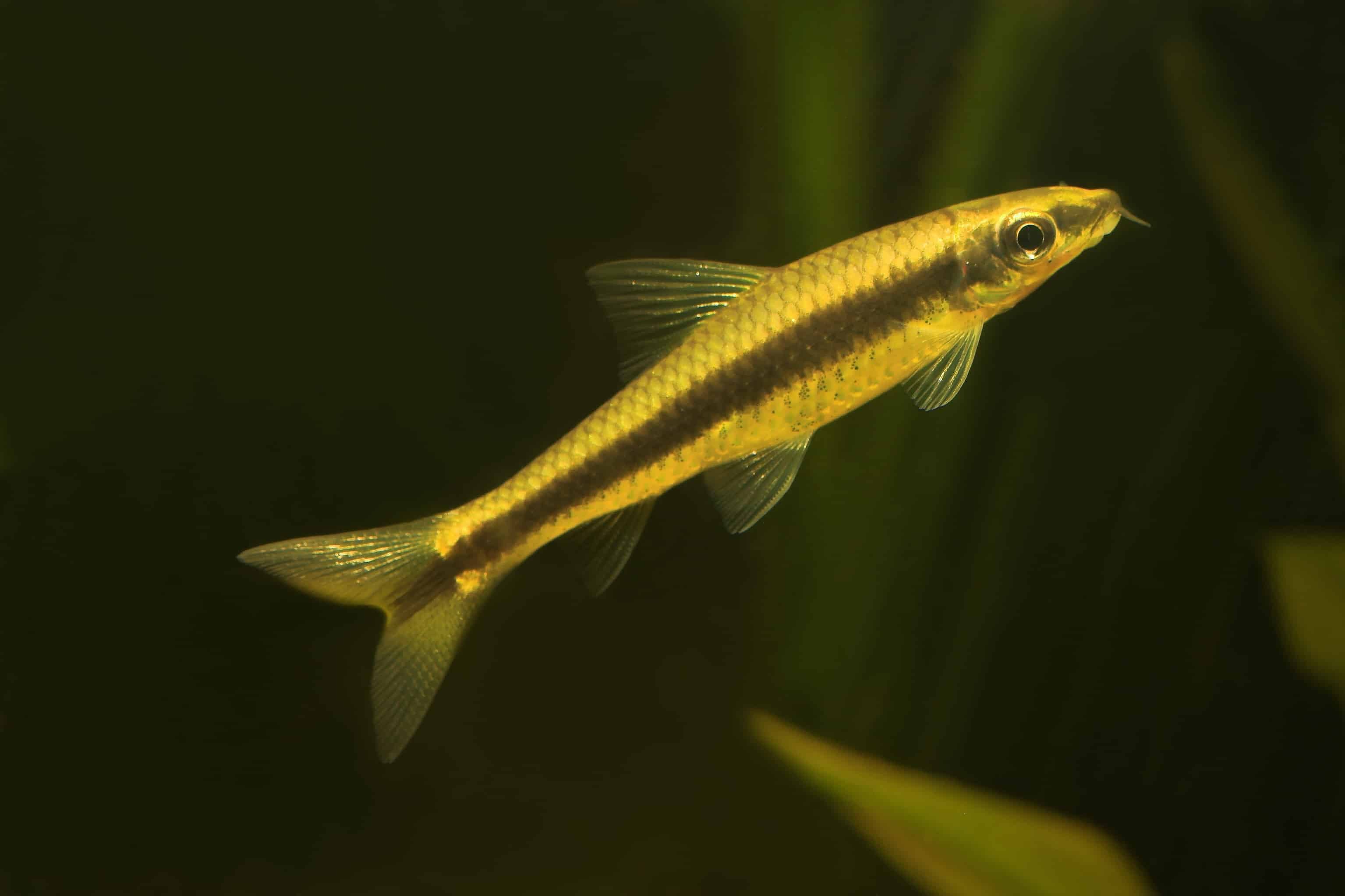
Koi fish are popular ornamental additions to outdoor ponds; however, adequate maintenance is essential as algal buildup has a detrimental effect on fish and needs controlling. Although adding chemicals to the water is one method, can I put an algae eater in my koi pond if I want a natural approach?
It is possible to control the amount of algal growth in a koi pond by adding algae-eating fish, snails, and plants. Although they will not be able to fix a severe algal issue, their presence will assist in controlling nutrient and algae levels. Proper filtration and maintenance are also required.
Depending on your area, you could have high algal blooms during spring and summer, or you may have freezing conditions during the winters. These factors create challenging management situations, but adding algae eaters helps that cause. But what algae eaters work best? Are koi compatible fish? What are the pros and cons of algae eaters?
Pro Tip: If you’re tired of wasting money and making costly mistakes on the koi-keeping hobby or are thinking about buying koi fish but don’t know where to start, I strongly suggest you check out this ebook. I recently read this ebook, and it contains SO much useful information, such as:
- 3 proven steps to identify koi fish diseases
- WARNING: 3 things you should NEVER do when it comes to caring for koi
- When to seek professional help when it comes to looking after your koi
How to control algae naturally in a koi pond
Algae present in koi ponds have a detrimental effect on dissolved oxygen levels—this reduced oxygen results in additional stress placed on fish and often leads to premature deaths.
Algae are plant-like organisms (they belong to a separate kingdom from plants) that are water-dependent. There are a few different types of algae, but the kinds that generally affect koi ponds are:
● Single-celled algae (green water). These microorganisms are suspended in the water column and cause the water to turn green.
● Hair (or string) algae. This alga grows together to form fibrous mats floating in the pond and on top of rocks and other decorations.
Both algae types grow due to an imbalance in nutrients in the water. These excess nutrients are often due to poor filtration, the buildup of organic material, and overstocking your pond with too many fish, coupled with too few plants to use the nutrients.
When controlling these algae, prevention is the best route, other plants, proper filtration, proper fish feeding/care practices, and, pertinently, algae-eating organisms.
By installing an adequate water pump, you reduce the degree of algal buildup as water circulates through the pump and filters, removing more significant algae. These pumps also oxygenate the pond.
The benefit of water plants is that they absorb nutrients produced by fish and other organic waste in ponds. Additional plants will absorb more nutrients, limiting the nutrients available for algae to develop.
Algae Eating Organisms In Fish Ponds
These animals are specially adapted to eating algae and are a phenomenal boon to any aquarium or pond setting.
Examples of organisms that eat algae include:
● Fish
● Snails
● Shrimp
Although koi are known to eat algae, they are not very effective. Plus, koi generally consume algae during the winter season.
Are Koi Fish Aggressive To Other Pond Fish?
Koi are considered non-aggressive fish and should not attack tank/pond mates. They may, however, harass slower species when kept together. Large koi will eat fry and smaller fish when the opportunity arises, so the stocking must be adequate and informed.
Koi are not always the easiest fish to keep with other fish because they prefer colder water. If you keep koi in an indoor tank or an area that does not get too cold during the winter, this compatibility is less of an issue. If koi are held outside in colder regions, take care when choosing pond mates.
Keeping algae eating fish with koi is already a challenge. Trying to keep shrimp with koi fish is next to impossible. Koi readily eat shrimp. So if you plan on trying it, you’ll need a lot of hiding spaces in the pond.
Keeping algae-eating freshwater snails with koi is another potentially viable option. Koi will eat snails, especially smaller ones, which is less of an issue if your koi are small.
Larger-sized snails are a good option for small to medium-sized koi, but the larger specimens may still suck big snails out of their shells.
What Algae Eaters Should I Put In My Koi Pond?
Most algae eaters are warmer temperature fish. This temperature preference means that these fish may die in winter if additional heat is not supplied.
Alternatively, these fish could be kept in an inside pond during the winter and moved into the koi pond during the spring, when algal blooms become an issue again.
Management issues aside, below are some highly recommended algae eaters to keep in your koi pond.
Bristlenose Plecostomus (Ancistrus cirrhosis)
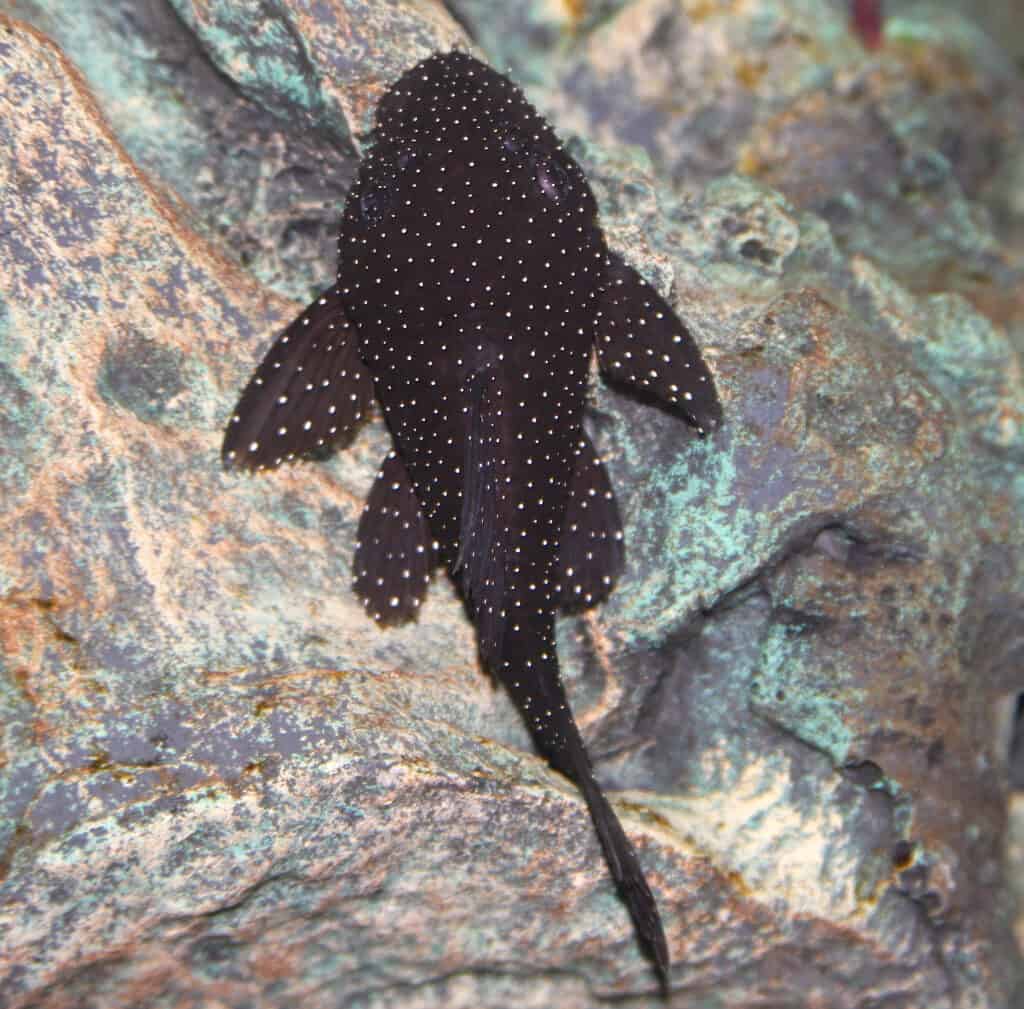
Bristlenose plecos originate from central and South America, from Amazonian rivers. These fish are popular among hobby aquarists as they are non-aggressive fish that excel at eating algae.
These catfish grow to roughly 5 inches in size, making them small enough to transfer to a wintering tank.
They require water temperatures of between 73 to 81°F.
Common Pleco (Hypostomus plecostomus)
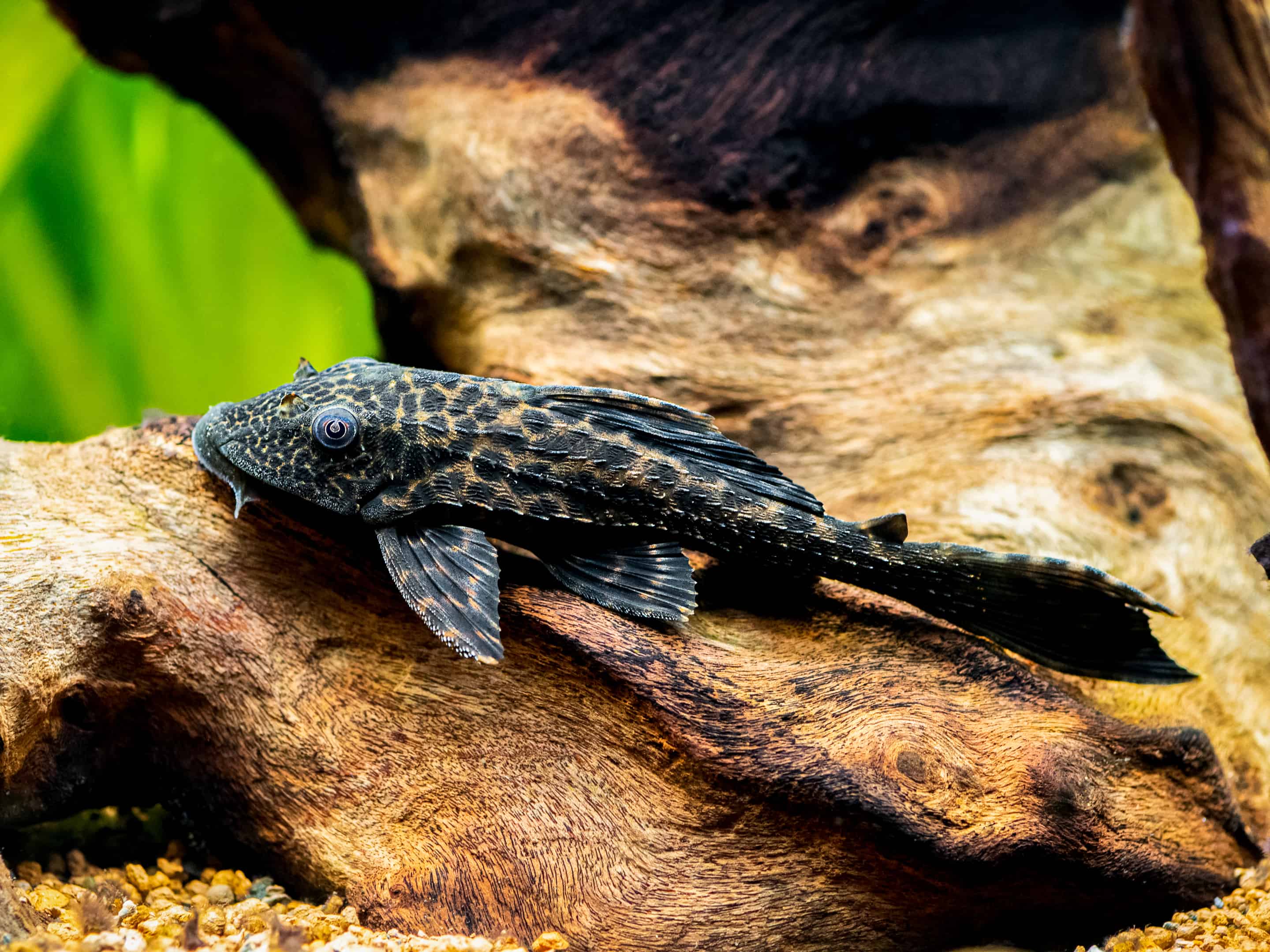
Like their cousins, the Bristlenose, common plecos, are also catfish originating from central and south America.
They are exceptional at consuming algae but are known to be territorial. They grow to 20 inches (ideal for a pond) prefer waters that range between 75 and 82°F but survive in water from 65 to 85°F.
Grass Carp (Ctenopharyngodon Idella)
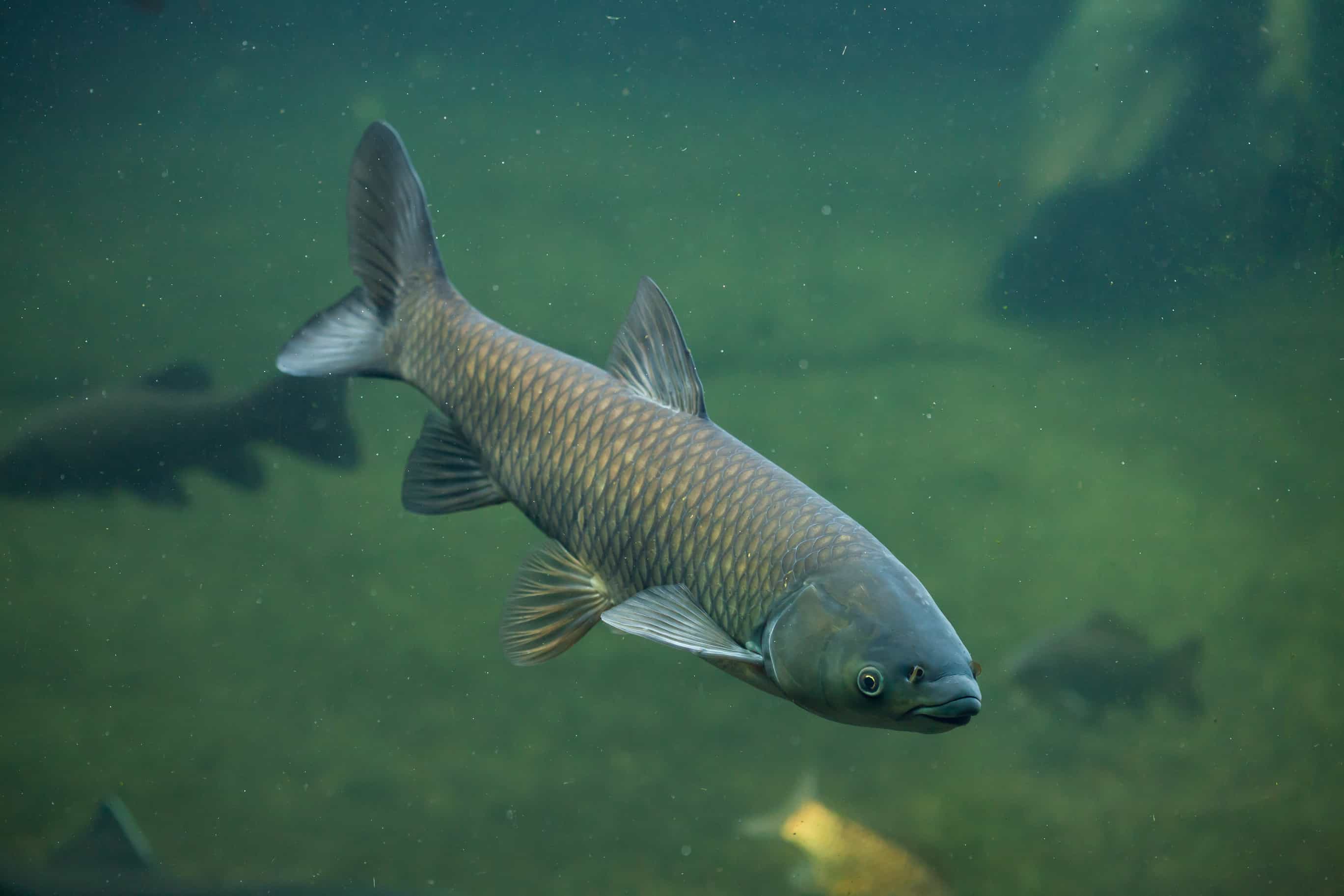
As fellow members of the carp family, these fish are not primarily algae eaters. They will, however, contribute to the overall grazing of plants and algae in and around the pond.
These fish can grow up to 3.9/4 feet, so the pond needs to be spacious enough. They can, however, tolerate a range of temperatures from close to freezing to almost 98.6°F.
They are generally compatible with koi but will eat smaller fish.
Hill Stream Loach (Beaufortia kweichowensis)
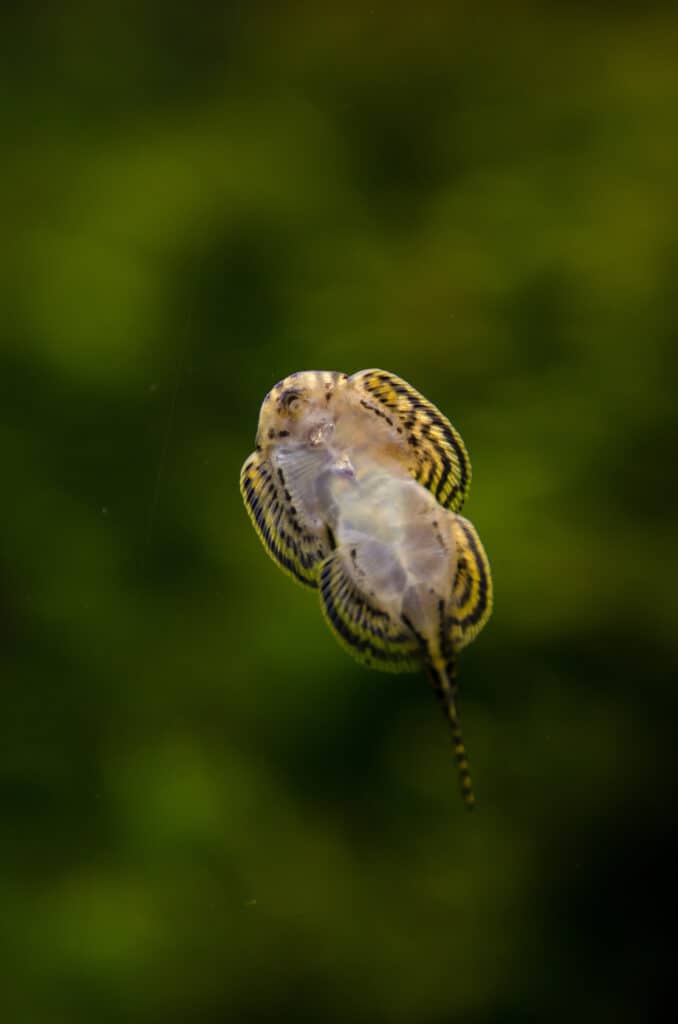

These small fish (they grow up to 3 inches maximum) are great for algae and tiny organisms living in the algae. They are also adapted to colder water temperatures (68-75°F) and require a high degree of dissolved oxygen.
However, they are small and risk being eaten by more giant koi.
Siamese Algae Eater (Crossocheilus oblongus)

As their name implies, these fish are ideal for consuming algae.
They reach around 6 inches in length and prefer water temperatures between 75-79°F, which will probably not be practical in colder regions.
Weather Loach (Misgurnus anguillicaudatus)
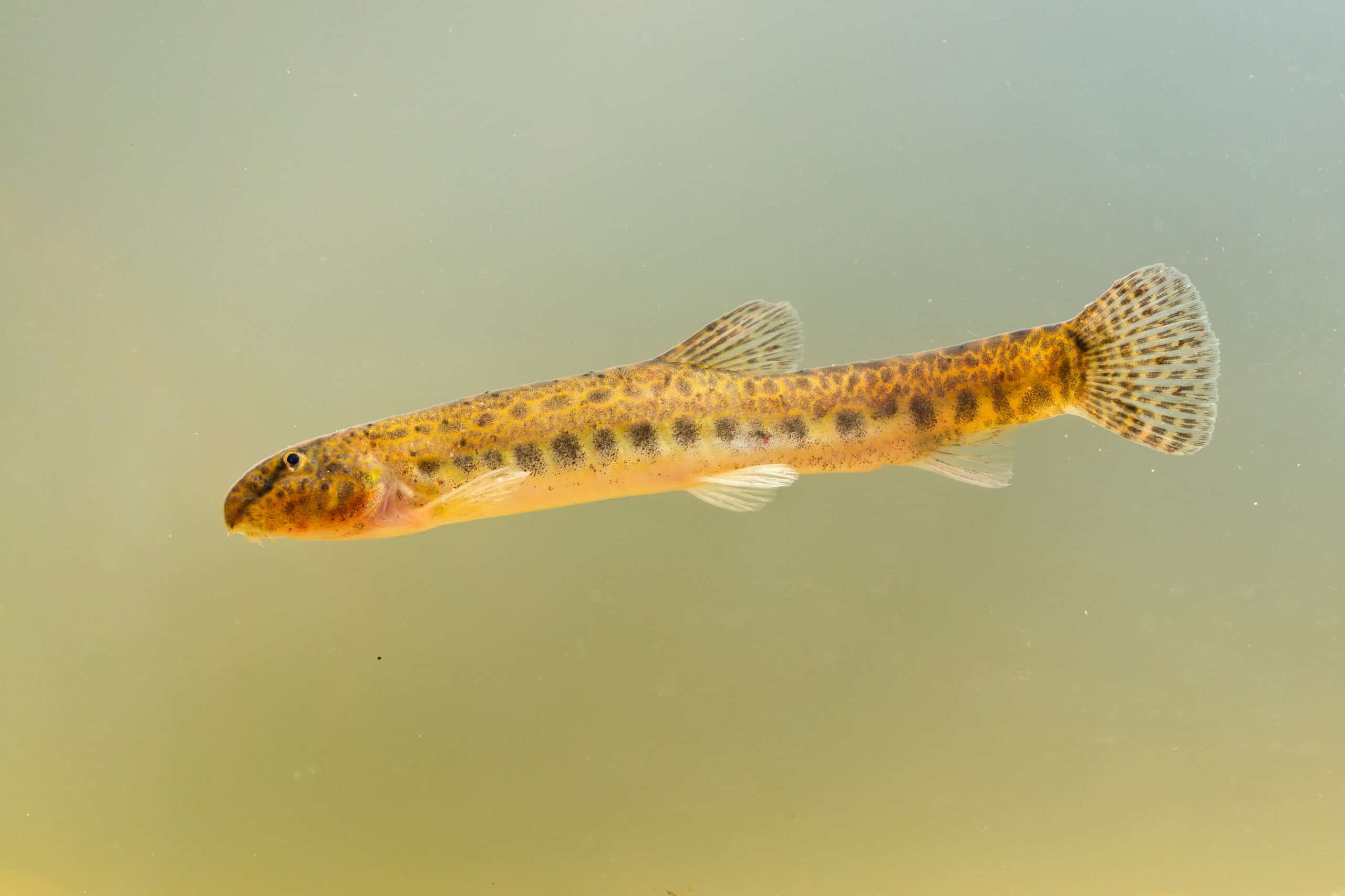
This Asian fish is adapted to cold waters ranging from 59-77°F, making them great for koi ponds.
Weather loaches also grow to roughly 10 inches long and, due to their bottom-dwelling nature, are great for controlling algae.
Black Japanese Trapdoor Pond Snails
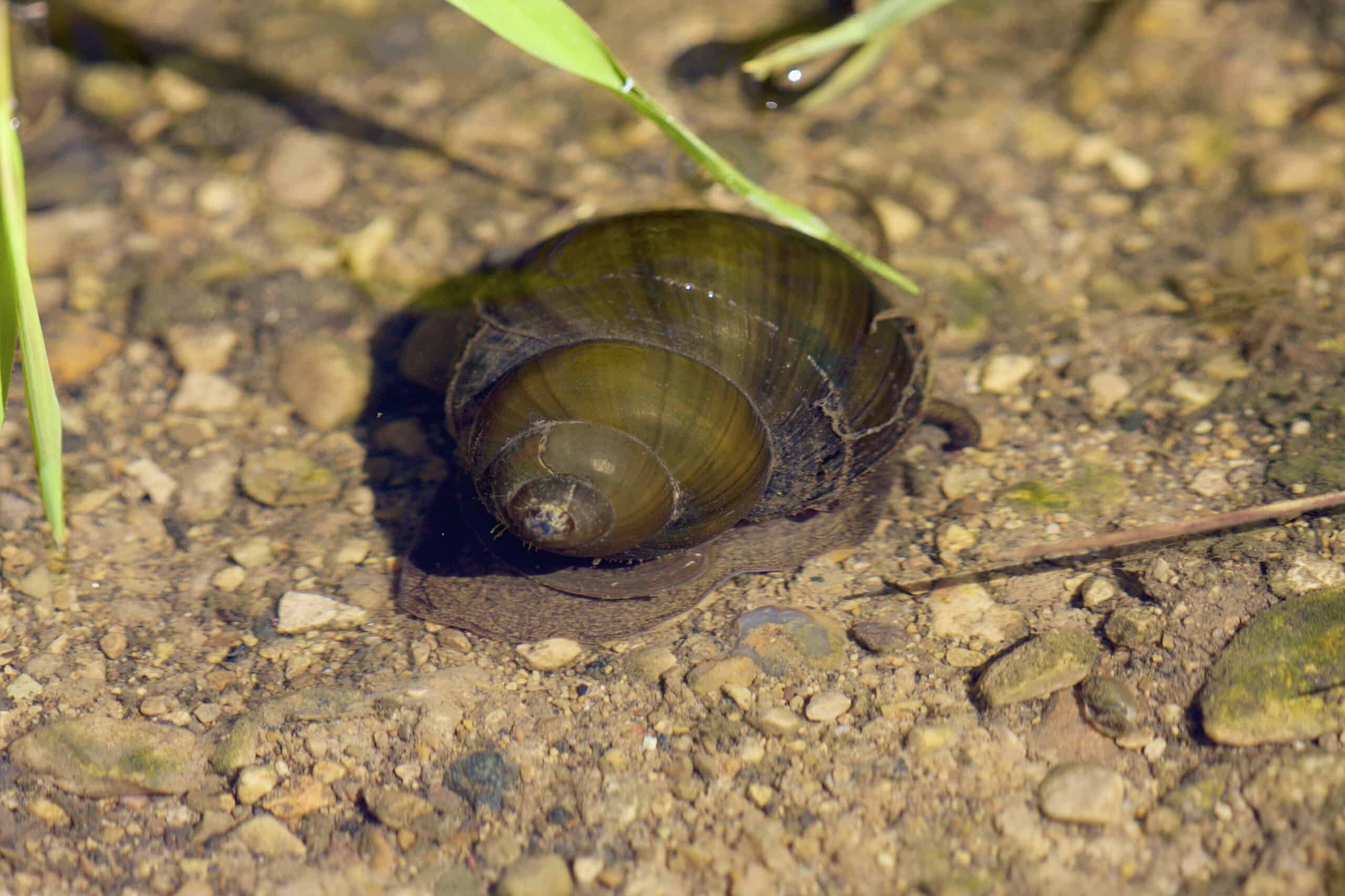
The only invertebrate on this list, these snails are ideal for ponds with medium-sized koi. They produce a small amount of live young each spring, so overpopulation is not an issue.
These snails grow up to 2 inches (roughly the size of a golf ball), which means that all but the biggest fish will not hassle adult snails.
These snails’ most significant selling point is that they can tolerate cold water (freezing conditions) during the winter months.
Pros And Cons Of Keeping Algae Eaters In A Koi Pond
There are benefits and drawbacks to keeping algae eaters in your pond, as with most things.
The table below compares some of the pros and cons of keeping algae eaters in your koi pond.
| Pros | Cons |
| A cheaper, natural way of reducing algal buildup. | Depending on the species, you may need to move the fish out of the pond during winter or install a heater. |
| They add diversity to your pond. | Algae eaters alone won’t control the algae. A filter and pump system with regular maintenance is required. |
Conclusion
Although not without its risks and downsides, keeping algae eaters in your koi pond is an excellent way to reduce the amount of algae buildup. Many species of cleaner fish are non-aggressive and should not fight with koi. However, many of these cleaner fish are not adapted to cold water and die in winter. It is crucial to manage algae and green water through regular maintenance.

